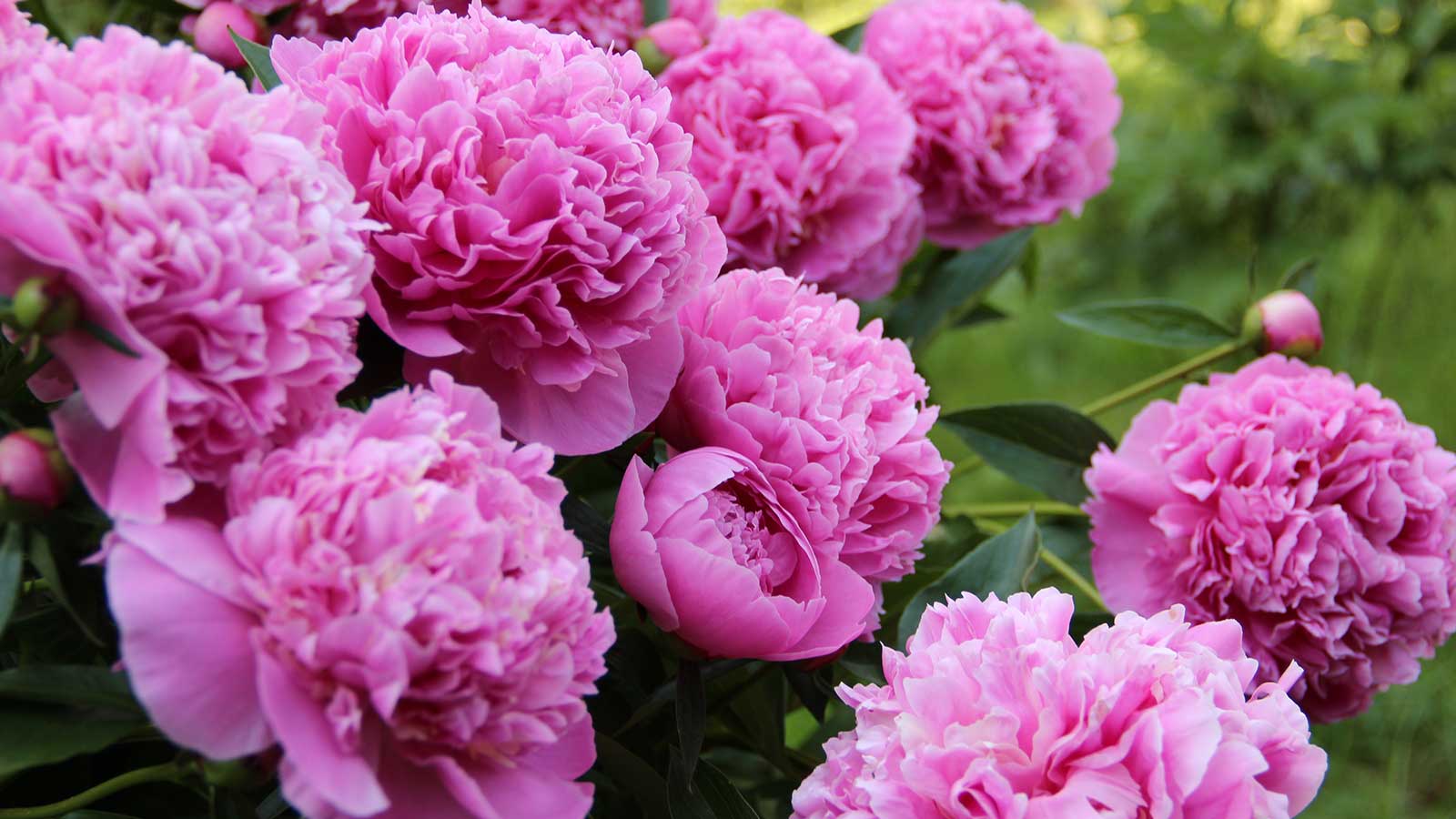
With their huge, dazzling blooms, peonies are a must for a perennial border. But to get the best from these late-spring superstars, it's worth thinking carefully about their planting companions before you add them to your garden.
Growing peonies alongside other spring-flowering plants is a good idea. As Anna Ohler, the owner of Bright Lane Gardens, highlights, this will 'add a layered look as they bloom alongside your peonies'. Meanwhile, summer-blooming companions will 'keep seasonal interest after the peony blooms die back,' she says. Choosing options that will thrive in similar conditions is also key, to ensure the health of both types of plants.
Below, you'll find six choices to try, recommended by horticultural experts. There's also helpful info on what not to plant near peonies, to prevent potential problems.
1. Hostas
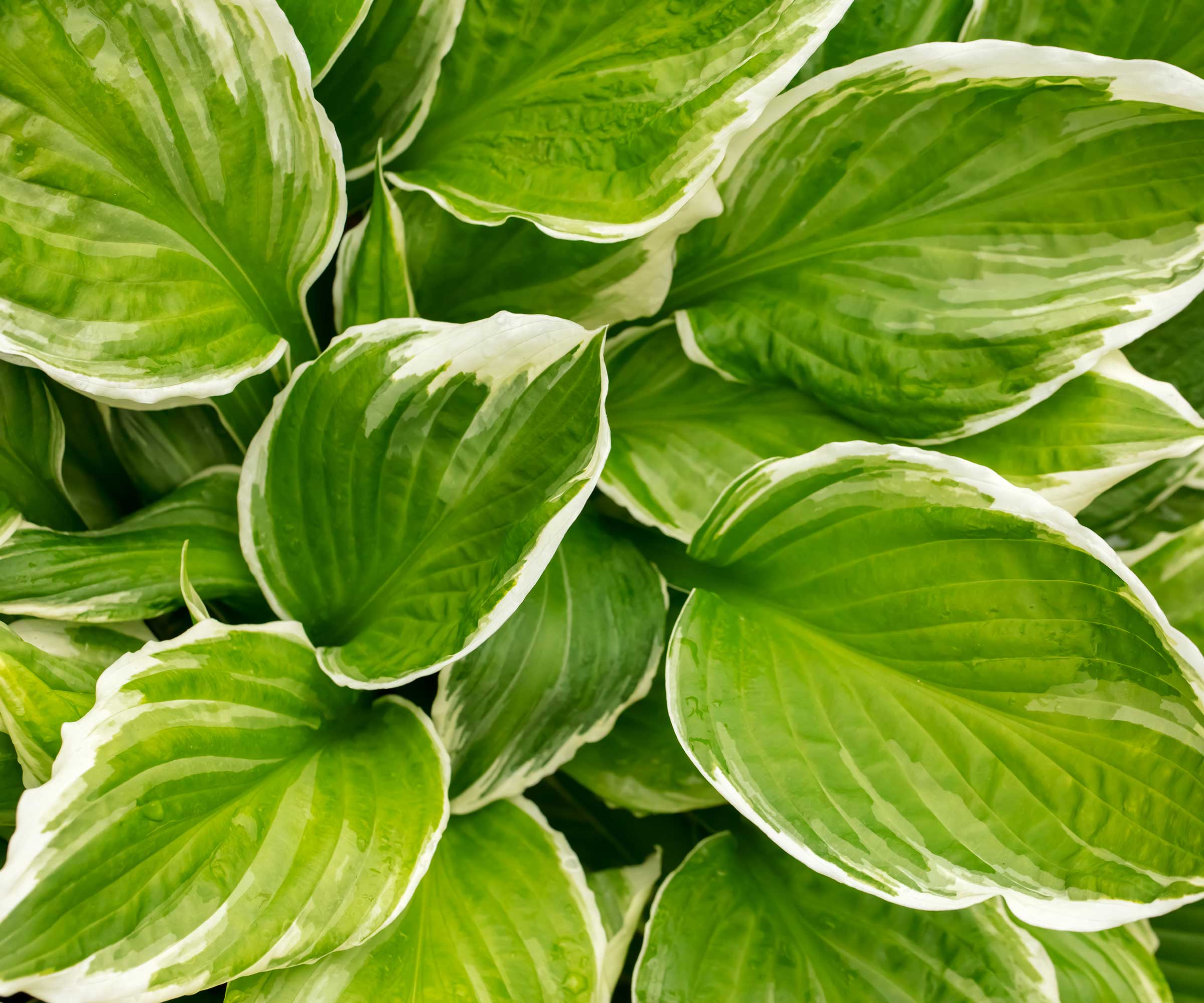
Kelly Funk, the president and CEO of plant nursery Jackson & Perkins, says hostas help keep the garden looking lush after peonies have finished blooming. 'Once peony foliage starts to fade, hostas step in with their broad, textured leaves, filling in gaps and providing a beautiful contrast,' she says.
'They also thrive in the dappled shade created by peonies, especially in hotter climates where peonies appreciate some afternoon relief from the sun,' Kelly continues. What's more, she notes how hostas have shallow roots, so they won’t compete heavily with peonies for nutrients.
Hostas are suitable for hardiness zones 3-9. Be sure to learn how to winterize hostas properly to help them bounce back in spring.
2. Hydrangeas
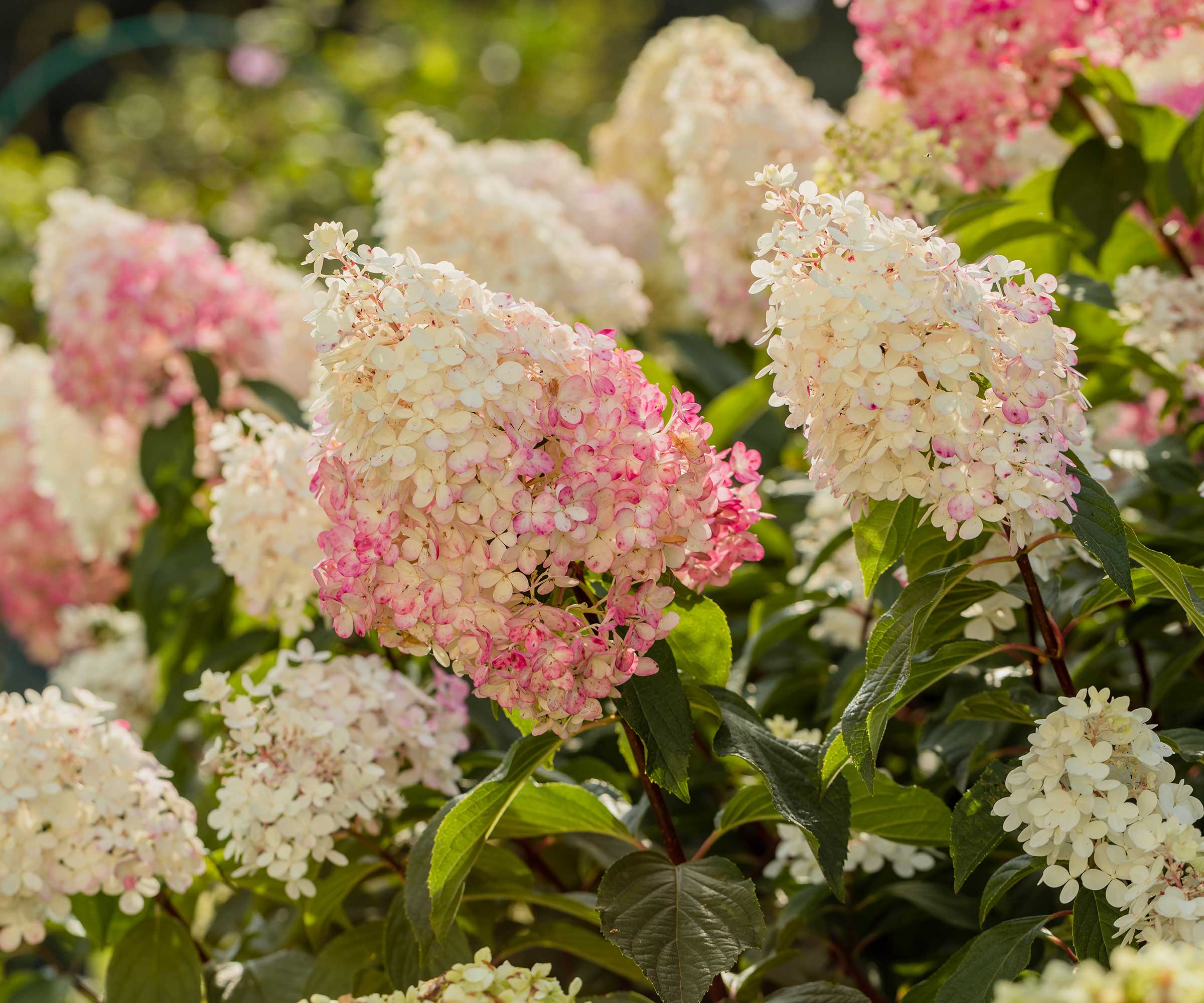
'Since hydrangeas bloom later in the season, they help extend interest in the garden long after peony season has ended,' Kelly says. She especially recommends panicle or smooth hydrangeas, that thrive in similar soil conditions. She also points out how these types tolerate more sun than others, making them even easier to pair with sun-loving peonies.
Amy Enfield, a senior horticulturist at ScottsMiracle-Gro, also recommends planting hydrangeas next to peonies, 'as long as each plant is given enough space to grow.'
Like hostas, these flowering shrubs do best in hardiness zones 3-9. Check how to prune hydrangeas properly to keep them looking their best.
3. Lady's Mantle
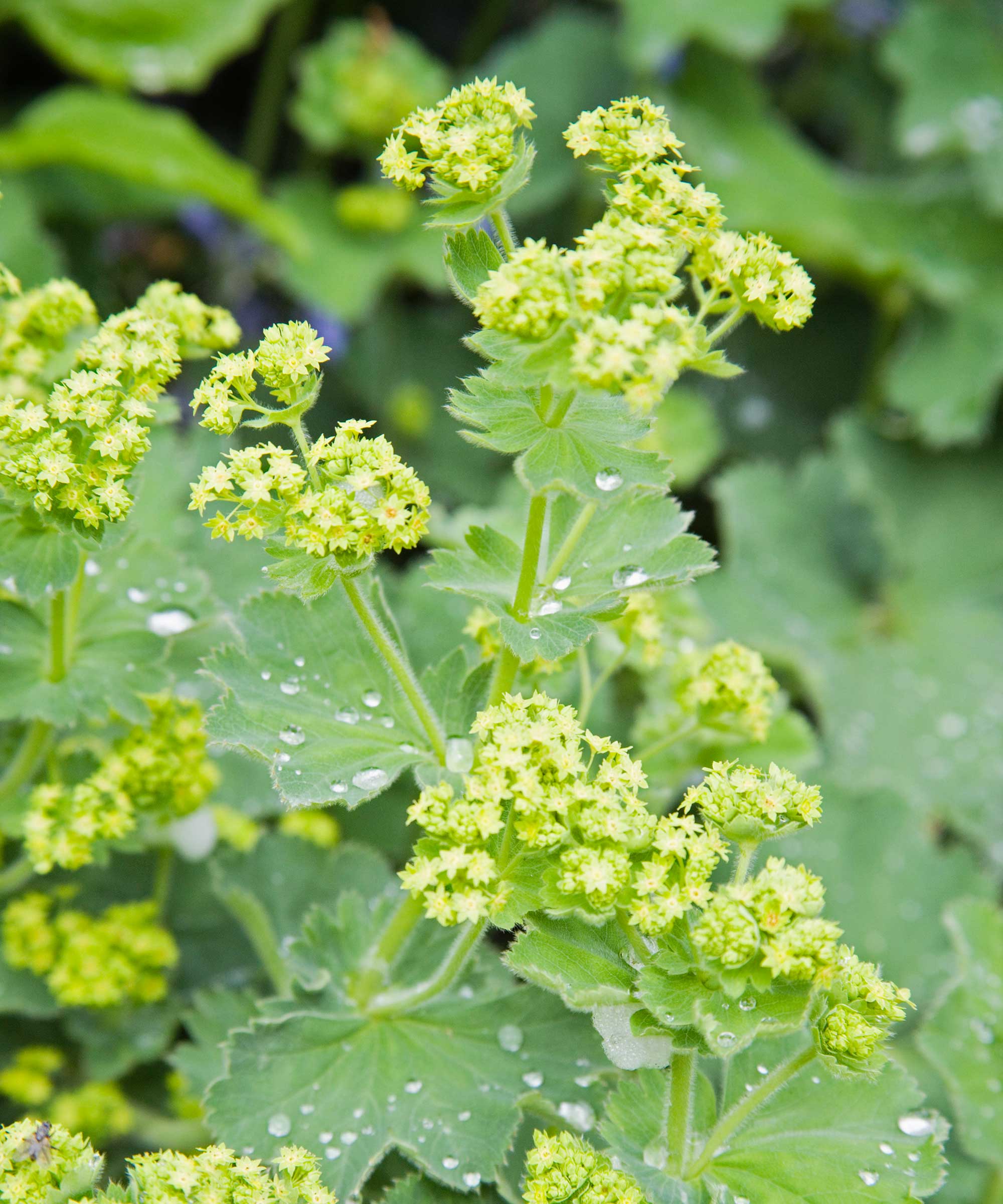
'For plants that are in flower at the same time, my favorite is lady’s mantle (Alchemilla mollis),' says gardening expert and author C.L. Fornari. She highlights how it can grow into a weed-smothering ground cover, and is happy to surround peonies even if partly shaded by the larger plant.
'The foamy, lime-green lady’s mantle flowers are the perfect contrast to the large foliage and flowers of the peonies, and they look spectacular together when cut for a bouquet,' C.L. continues. So, if you're growing peonies as part of your cutting garden, it's definitely worth adding this pretty perennial to the list.
Lady's mantle is available to buy from Nature Hills. It thrives in hardiness zones 3-7, in well-draining soil, and works particularly well in a cottage garden scheme. Do note that this plant is considered invasive in some regions, so double-check before adding it to your backyard.
4. Floribunda Roses
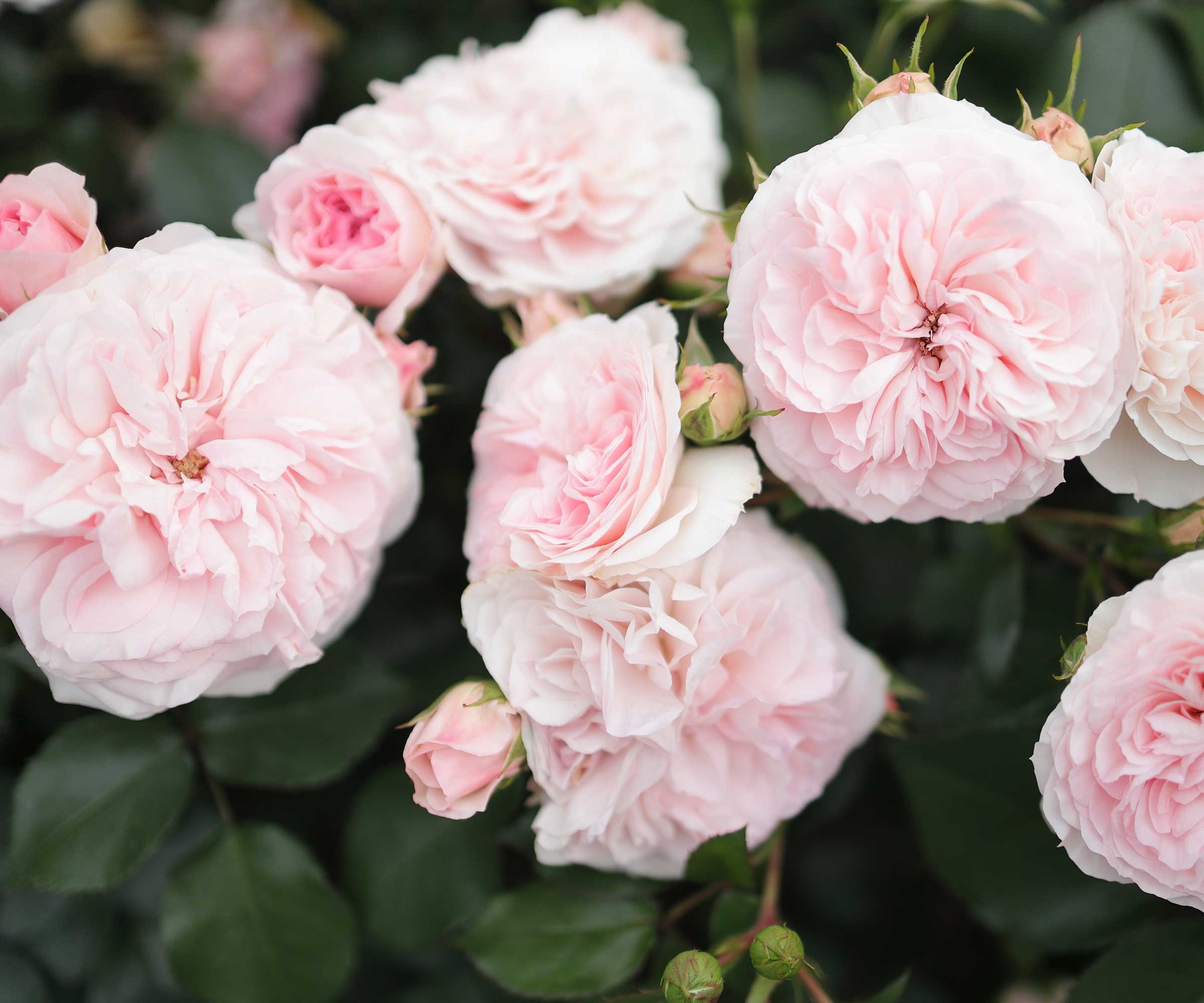
For a timeless, romantic garden feel, Kelly recommends planting floribunda roses and peonies together. 'While peonies provide an early burst of dramatic blooms, floribunda roses keep the color going with their continuous flowering habit.
'Peony’s bold, oversized blooms pair well with the rose’s delicate clusters, creating a rich, layered look in the garden,' she continues. 'Both plants thrive in rich, well-draining soil and need plenty of sunlight, resulting in similar care requirements.'
Kelly also points out another benefit of planting these two together: 'the thorny stems of roses provide some protection against pests that could harm peonies.'
Floribundas are best grown in hardiness zones 5-9 and tend to be disease-resistant.
5. Salvias
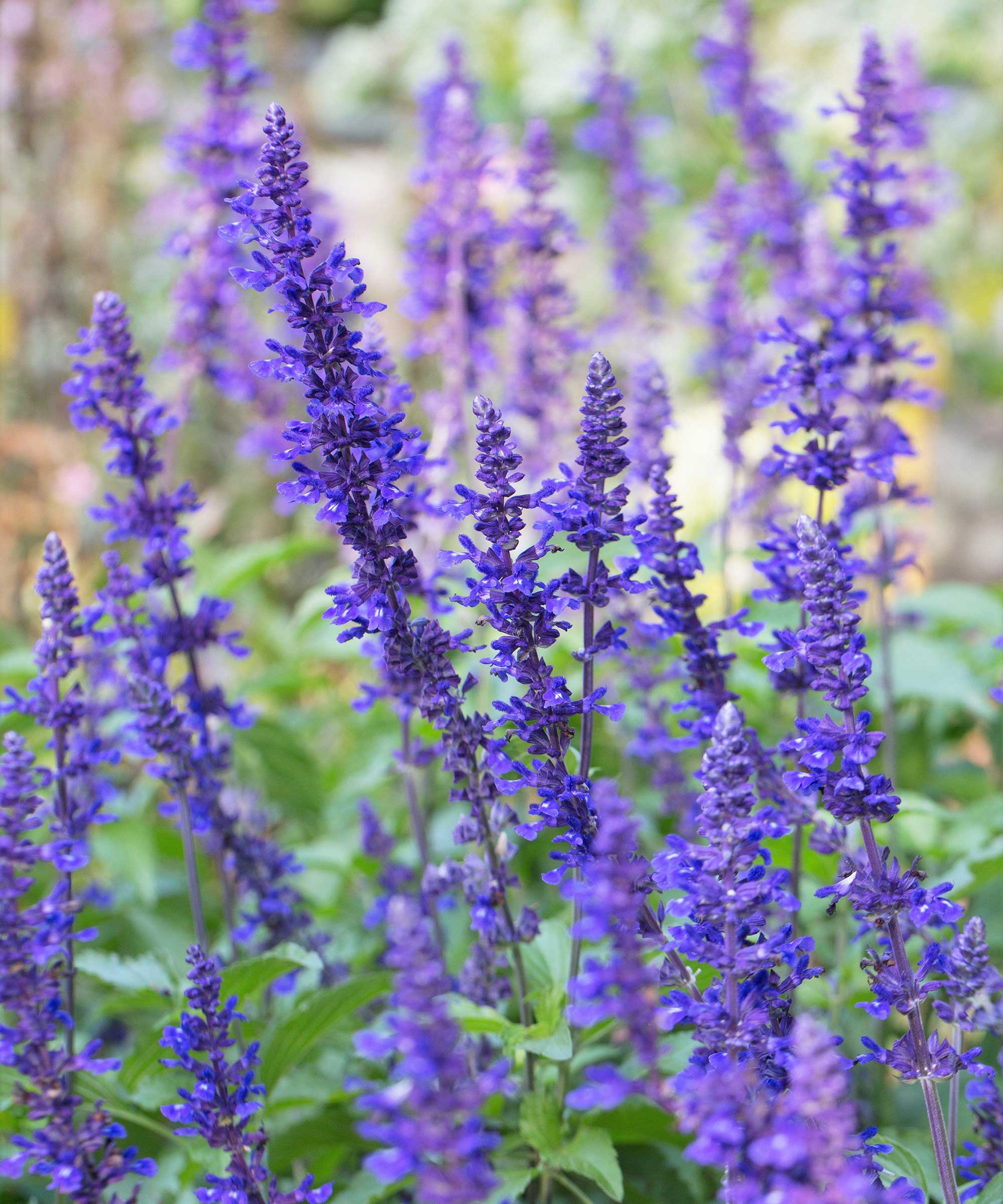
Salvia – upright, flowering plants that are excellent for pollinators and generally suitable for hardiness zones 3-9 – are another option. As Kelly highlights, they offer a striking contrast with their vertical flowers alongside the round, ruffled blooms of peonies. 'Since both plants love full sun and well-drained soil, they make a natural pair with minimal extra effort,' Kelly adds.
Garden designer Lee Miller recommends the ‘May Night’ variety, a plant with deep purple blooms which flower at the same time as peonies. 'Plant salvia in front of or alongside peony to produce a layered look,' she says. 'Peony "Bartzella" and "Karl Rosenfield" are especially breathtaking alongside perennial salvia.'
You can shop for 'May Night' salvias from Nature Hills, as well as the 'Karl Rosenfield' peony, also from Nature Hills, which is a deep pinkish-red.
6. Lamb's Ears
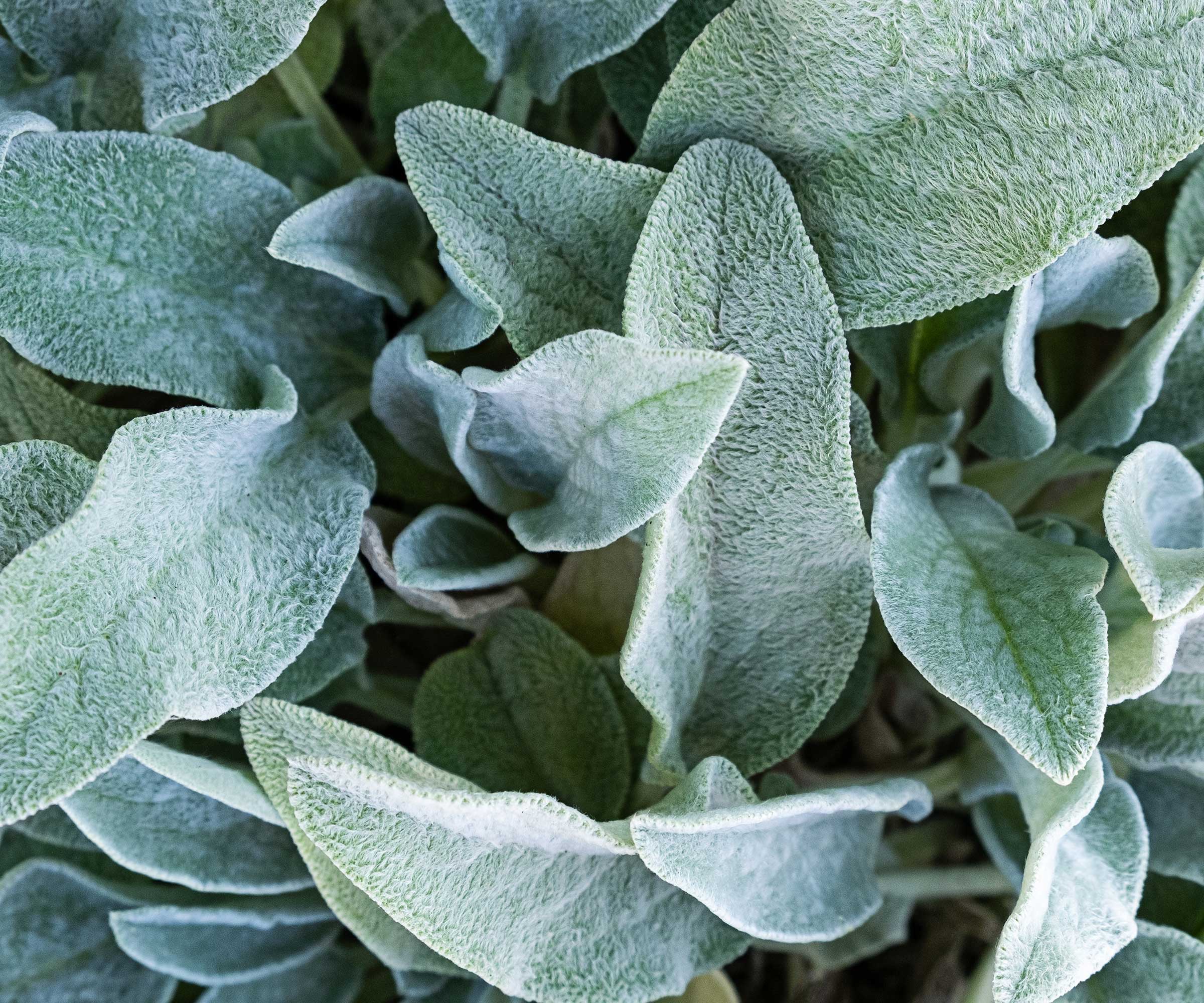
Both Lee and landscape designer Amy Martin recommend planting lamb’s ears (Stachys byzantina) next to peonies.
Amy Martin says, 'Lamb’s ears is a striking companion plant for the peony, with soft, silvery-green foliage that creates a glowing color contrast when grown next to the larger, deep green peony leaves. It forms a low, dense clump that softens the visual transition from the ground to the upright peony form.'
One of the best plants for a sensory garden, lamb's ears is suitable for hardiness zones 4-9. 'Just be mindful of watering, since lamb’s ears prefer drier soil than peonies,' says Amy Martin. 'Consider snipping off the flowers to keep the plant focused on producing its signature velvety foliage.'
You can buy lamb's ears plants at Nature Hills.
What should you avoid planting next to peonies?
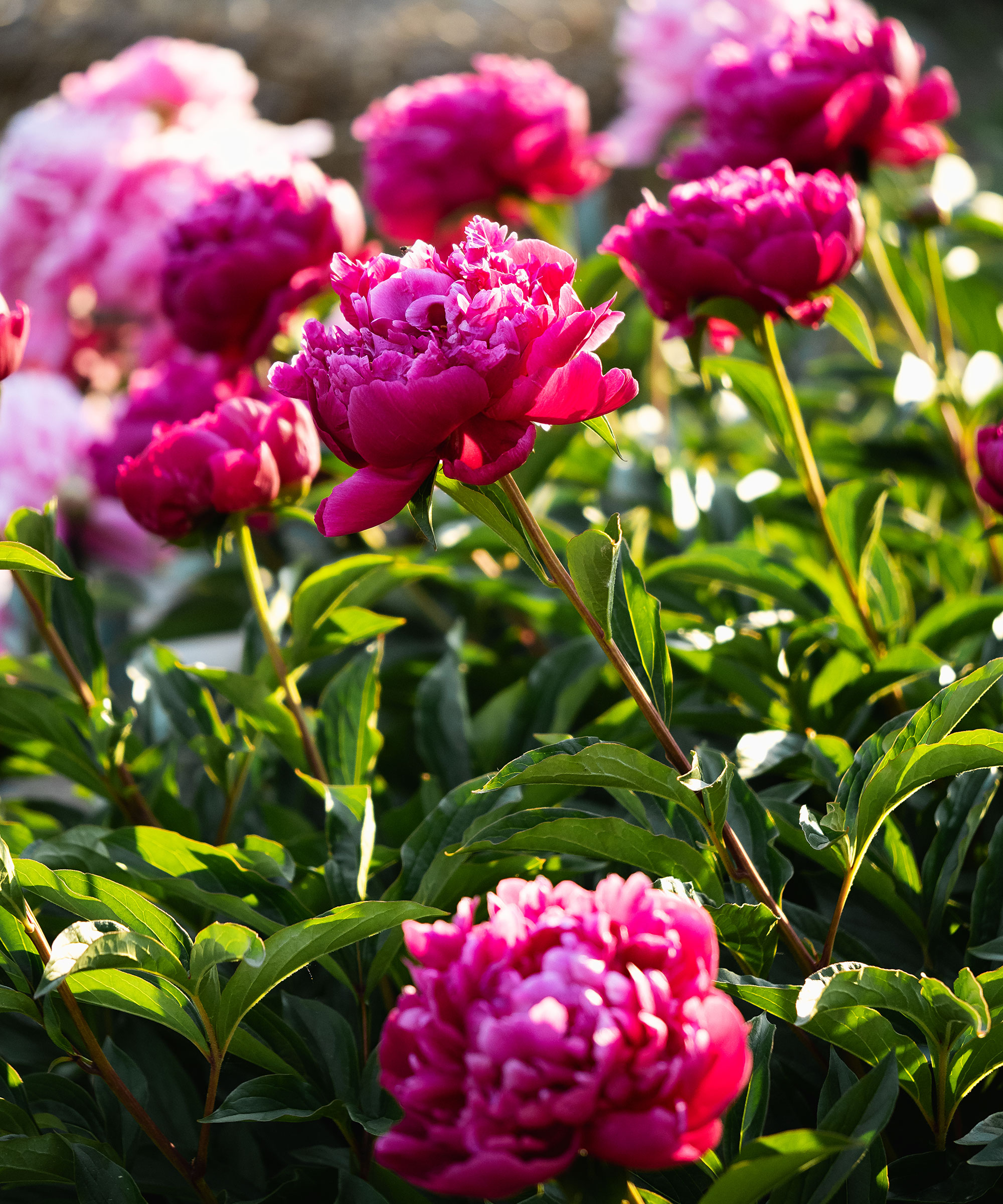
Amy Enfield underlines how peonies don’t like competition – 'they need their space and good air circulation to prevent diseases, and they don’t like to be shaded by taller plants.'
For instance, she advises against planting tall varieties of ornamental grasses next to peonies. 'While tall ornamental grasses add a nice statement to any garden, they can block the sunlight that peonies need if planted nearby,' she says, adding that their sprawling roots also compete with peony roots for water and nutrients.
Kelly Funk also warns against planting large trees with extensive root systems nearby, such as maples and walnuts, as they too will compete for moisture and nutrients. 'Walnut trees are especially problematic because they release juglone, a chemical that can stunt peony growth.'
Kelly also says to steer clear of plants that need very different soil conditions, such as azaleas and rhododendrons. 'Peonies prefer neutral to slightly alkaline soil, while these shrubs require acidic soil. Their shade and moisture needs also don’t align well with peonies.'
FAQs
What are good evergreen companion plants for peonies?
Amy Martin shares that she loves to pair peonies with boxwood shrubs, because they provide a 'dense, evergreen structure that contrasts beautifully with the peony’s softer, more billowing form.
'The crisp, tidy lines of a boxwood hedge create a sense of visual tension against the looser, more informal growth of peonies,' she adds. 'For those who love a classic, formal garden aesthetic, this pairing offers the perfect blend of evergreen structure and seasonal beauty.'
Alternatively, consider dwarf globe blue spruce (Picea pungens 'Globosa'), as recommended by Lee Miller. 'It beautifully complements the medium-green foliage and blooms of peony with its amazing bright blue needles and requires the same growing conditions.'
Which companion plants will deter pests from your peonies?
You may also wish to plant something specifically to deter pests. For instance, Anna Ohler recommends lavender which she says does a good job deterring deer and is 'a classic, low-maintenance addition to any garden.'
She also suggests planting alliums nearby, highlighting how they come in a variety of shapes and forms, and have a strong odor of onions when eaten, so deer and rabbits are likely to avoid them.
While choosing planting companions carefully will help peonies look beautiful in your backyard, there are lots of other things to bear in mind to get the best from these bloomers.
For instance, you'll need to know how to support peonies to prevent them from flopping over, and how to prune peonies, too. And if you only have a small courtyard or patio to play with, you don't have to miss out: with a bit of know-how, peonies are great additions to pots.







